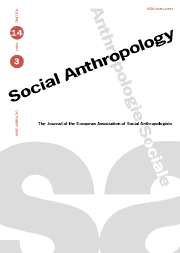Article contents
Postindustrial valleys: the Pyrenees as a reinvented landscape
Published online by Cambridge University Press: 29 November 2006
Abstract
At the dawn of the twenty first century, nature, in the valley of Lillet, is represented by luxuriant forests, the return of charismatic animal species and dramatic landscapes. The valley of Lillet is located in the Catalan Pyrenees in Northeast Spain. Its complex recent history has left deep tracks on its landscape. The wilderness that currently characterizes this area is a direct result of this history. In the last two centuries this valley sequentially experienced a transition from traditional agricultural life to a modernized and hyper-industrialized mode of production. Once covered by farms and agricultural terraces, the valley became an industrial center. After the seventies and the global oil crises, mines closed and factories fled the valley, and with them most of its population. Subsequently, the landscape was ready for the postmodern takeover: protected areas and ski resorts occupied the ranges. Thus, the deindustrialization of the valley did not bring the farms back. The postindustrial landscape that emerged from the transformation is not just the product of this double transition, but the result of a simultaneous cohabitation of elements from each “period”. In postindustrial and mostly urban Catalonia, wilderness and eco-leisure have become an extremely desirable commodity. Depopulated rural Catalonia provides an ideal setting for a new wave of urban re-appropriation of the landscape.
- Type
- Research Article
- Information
- Copyright
- Cambridge University Press 2006
- 7
- Cited by




